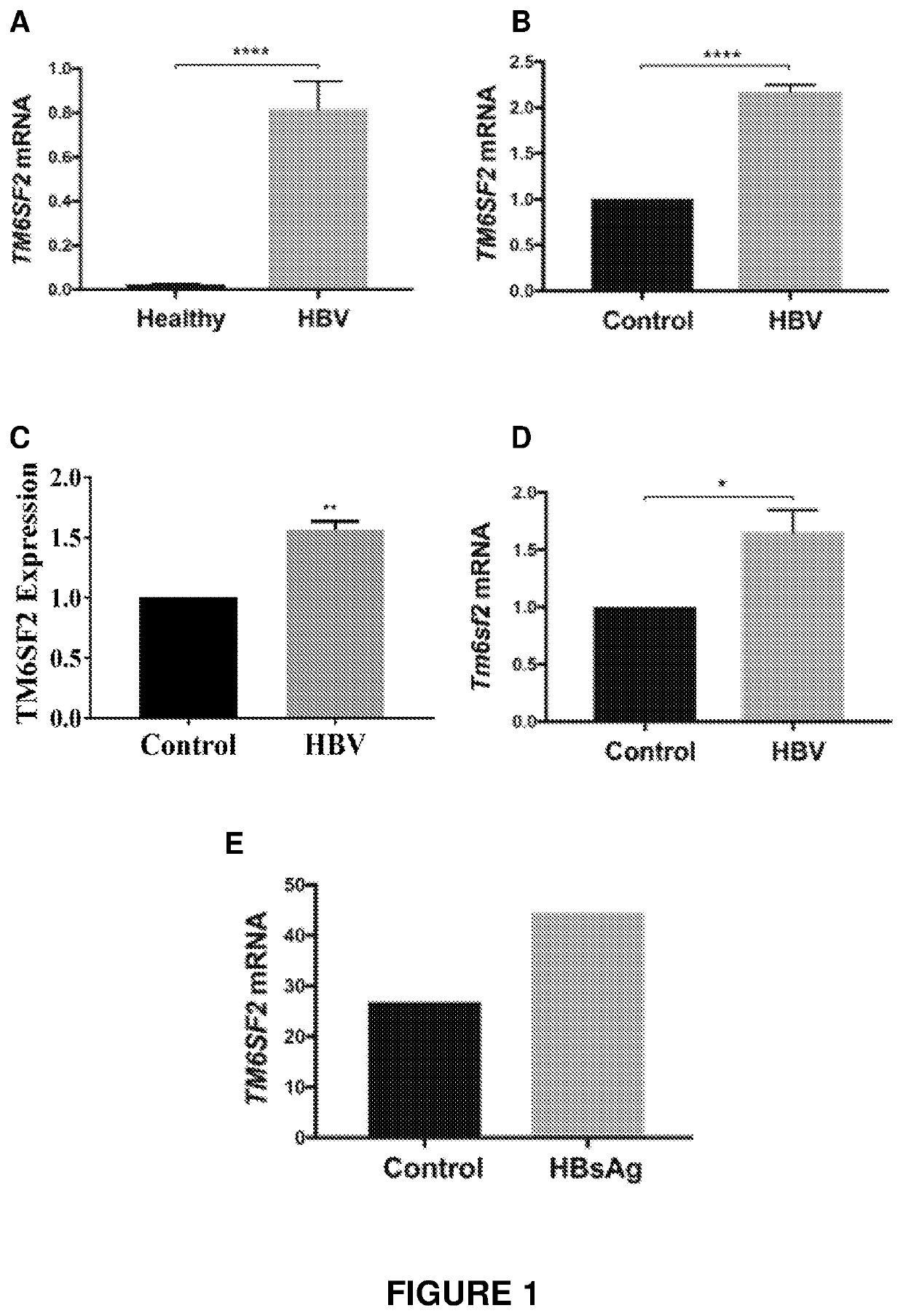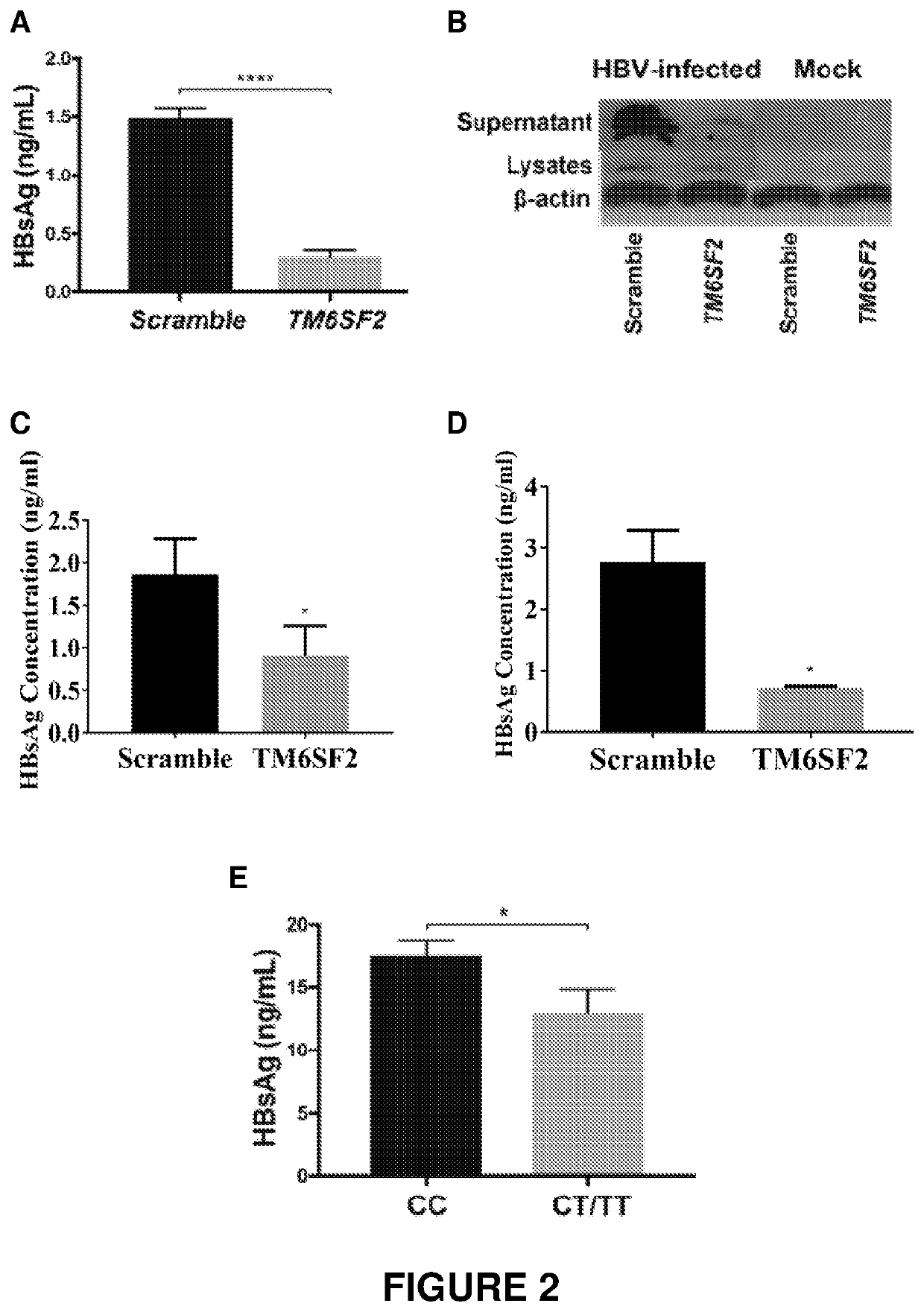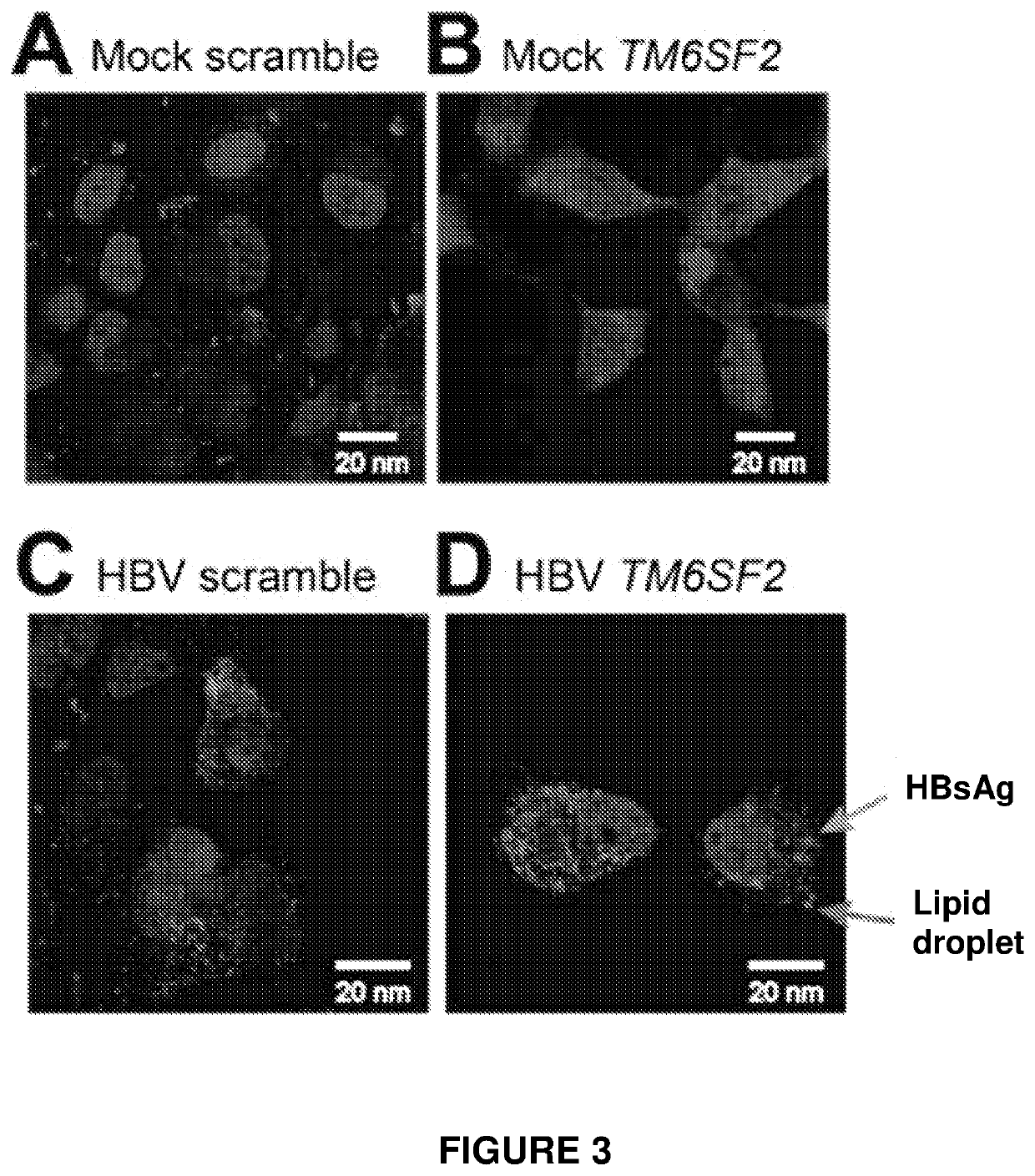Compositions and methods for treating viral infections
a technology for viral infections and compositions, applied in the field of compositions and methods for treating viral infections, can solve the problems of high mortality, low clearance rate of hbsag, and high cost of current hbv therapeutics, and achieve the effect of reducing the accumulation of tm6sf2 mrna
- Summary
- Abstract
- Description
- Claims
- Application Information
AI Technical Summary
Benefits of technology
Problems solved by technology
Method used
Image
Examples
example 1
[0178]To determine whether HBV affects expression of TM6SF2, liver biopsies were taken from patients suffering from HBV infection and from healthy controls, and expression of TM6SF2 was measured in each group of subjects by quantitative PCR. As shown in FIG. 1A, expression of TM6SF2 was significantly higher in HBV-infected subjects compared to non-infected controls (p<0.0001).
[0179]TM6SF2 expression was also measured in a cell culture model. Specifically, Huh7 cells were transfected with HBV genotype D, and TM6SF2 expression was measured by quantitative PCR. As shown in FIG. 1 B, expression of TM6SF2 was significantly higher in HBV-infected cells compared to uninfected controls. Huh7 cells transfected with HBV genotype C also showed higher levels of TM6SF2 expression compared to uninfected controls (FIG. 1C).
[0180]TM6SF2 expression was also measured in a mouse model. Specifically, liver samples were taken from mice infected with HBV (genotype A) and from non-infected controls, and e...
example 2
[0182]A small interfering RNA (siRNA) was designed to target TM6SF2 and silence its expression by RNAi (SEQ ID NO. 5 and SEQ ID NO. 6). Huh7 cells infected with HBV (genotype D) were treated with the TM6SF2-specific siRNA or a scramble control, and the level of HBsAg in the supernatant was measured. Enzyme-linked immunosorbent assay (ELISA) demonstrated that inhibiting TM6SF2 (by approximately 80%) significantly reduced the amount of HBsAg secreted by the cells (FIG. 2A; p<0.0001). Western blotting also confirmed that inhibition of TM6SF2 reduced the levels of HBsAg in the supernatant and cell lysates (FIG. 2B). Inhibition of TM6SF2 also reduced the amount of HBsAg (genotype C) in Huh7 cells (FIG. 2C).
[0183]HepaRG cells (differentiated primary hepatocytes) infected with HBV (genotype D) were treated with the TM6SF2-specific siRNA (SEQ ID NO: 6) or a scramble control, and the level of HBsAg in the supernatant was measured. ELISA demonstrated that inhibiting TM6SF2 significantly reduc...
example 3
[0185]To examine the effect of HBV infection and TM6SF2 expression on intracellular lipid content in vitro, cytoplasmic lipid droplets in Huh7 cells were labelled with fluorescent BODIPY 558 / 568 C12 (4,4-difluoro-5-(2-thienyl)-4-bora-3a,4a-diaza-s-indacene-3-dodecanoic acid) (Boulant et al. (2008) Traffic 9: 1268-1282). Inhibition of TM6SF2 with a siRNA (SEQ ID NO. 6) led to an approximately 6-fold increase in lipid droplet area and an approximately 12-fold increase in size (FIG. 3B) compared to cells treated with a scramble control (FIG. 3A). Although cells infected with HBV (FIG. 3C) had similar cellular lipid to mock infected cells (FIG. 3A), reducing TM6SF2 in HBV infected cells did not increase lipid (FIG. 3D).
PUM
| Property | Measurement | Unit |
|---|---|---|
| pH | aaaaa | aaaaa |
| pH | aaaaa | aaaaa |
| molecular weight | aaaaa | aaaaa |
Abstract
Description
Claims
Application Information
 Login to View More
Login to View More - R&D
- Intellectual Property
- Life Sciences
- Materials
- Tech Scout
- Unparalleled Data Quality
- Higher Quality Content
- 60% Fewer Hallucinations
Browse by: Latest US Patents, China's latest patents, Technical Efficacy Thesaurus, Application Domain, Technology Topic, Popular Technical Reports.
© 2025 PatSnap. All rights reserved.Legal|Privacy policy|Modern Slavery Act Transparency Statement|Sitemap|About US| Contact US: help@patsnap.com



